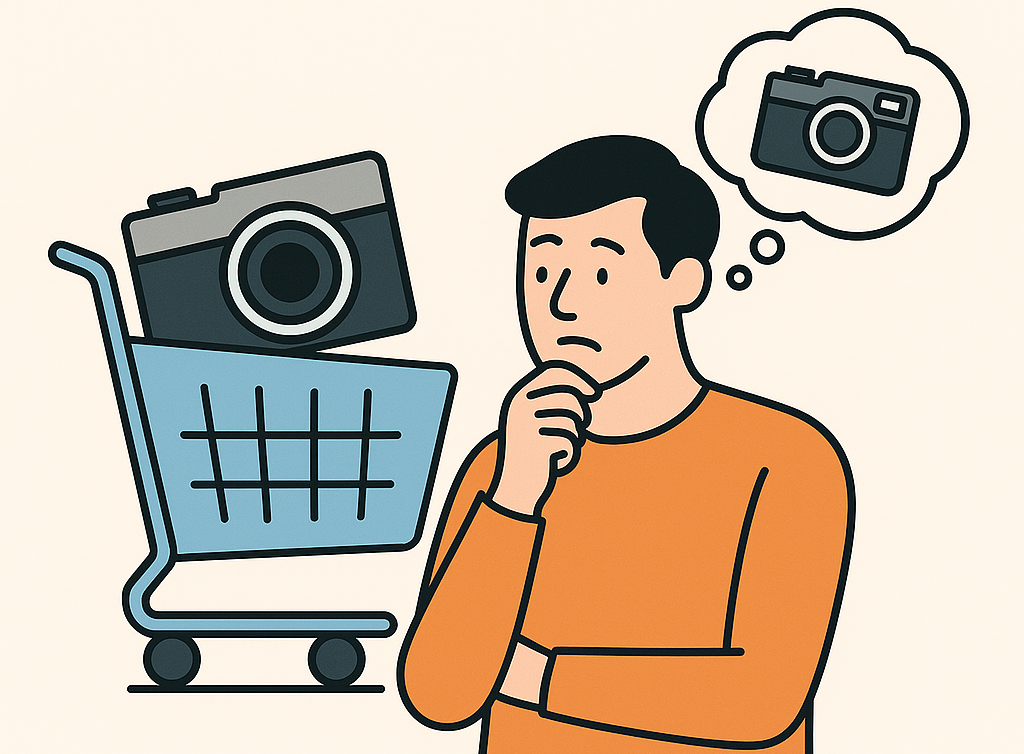Evaluating Value: Resisting the Romance of Unnecessary Upgrades
The temptation to upgrade gear, like buying a new camera, often stems from romanticised ideas rather than actual need. True value lies not in the latest technology, but in the moments we capture and the consistency with which we create.

Every so often, a new piece of tech appears that seems to whisper directly to your creative self. Recently, for me, it was the Fujifilm X-Half. The sleek launch previews, the glowing reviews, and the promise of new creative potential were intoxicating. I imagined it fitting perfectly into my routine—unlocking a new level of inspiration. But beneath the excitement, something more familiar began to surface.
The Pattern Beneath the Hype
The deeper I reflected, the more clearly I recognised the cycle. I already own several excellent compact cameras. None are obsolete. None are holding me back creatively. So what exactly was I hoping this new model would do for me?
Would it give me better results than my Ricoh GR IIIx? Unlikely. Would it offer a more enjoyable experience? In truth, no. The new Fujifilm X-Half has its appeal, but its image quality is arguably a step down, the fixed lens narrows creative flexibility, and it lacks image stabilisation. I wasn’t buying a tool—I was chasing a feeling. A romanticised vision of what photography could become, instead of grounding myself in what it already is.
Chasing Upgrades: A Familiar Trap
Over the years, I’ve rotated through DSLRs, mirrorless systems, hybrids—each time convinced that this was the one that would reinvigorate my photography. It rarely played out that way. The cameras got heavier, the process more cumbersome, and the excitement faded faster than I’d admit. Many of those “upgrades” ended up solving problems I didn’t actually have.
Looking back, it’s clear: most of those purchases were distractions, not enablers.
The Compact That Changed the Game
My recent trip to Korea brought everything back into focus. I travelled light, with just my Ricoh GR IIIx. It slipped effortlessly into my coat pocket, stayed with me through every moment, and delivered beautiful images without making itself the centre of attention.
I didn’t have to think about gear. I just was—in the moment, fully present. That’s the mark of a truly great tool: it disappears.
The Truth About Value
We live in a time where the camera industry runs on rapid product cycles and engineered dissatisfaction. Social media only intensifies the noise—fueling comparison, doubt, and the subtle pressure to keep up. But the truth marketing won’t tell you is this:
Your camera doesn’t lose value just because something newer exists. If it brought you joy once, it still can.
And when that upgrade itch comes back (because it always does), I try to stop and ask:
Is this going to help me create better images—or am I just buying a story?
Seeing Over Owning
Photography was never about the gear. It’s about perception. About presence. About preserving fleeting emotion and light in a world that moves too fast.
The most iconic photographs in history weren’t made with the best equipment—they were made by people who understood that seeing matters more than having, and that presence will always trump possessions.
Closing Thought
I still get tempted. I still browse. But more and more, I return to a simple truth: the best camera is the one you trust enough to take everywhere, and the one that asks the least of you while letting you focus on the world around you.